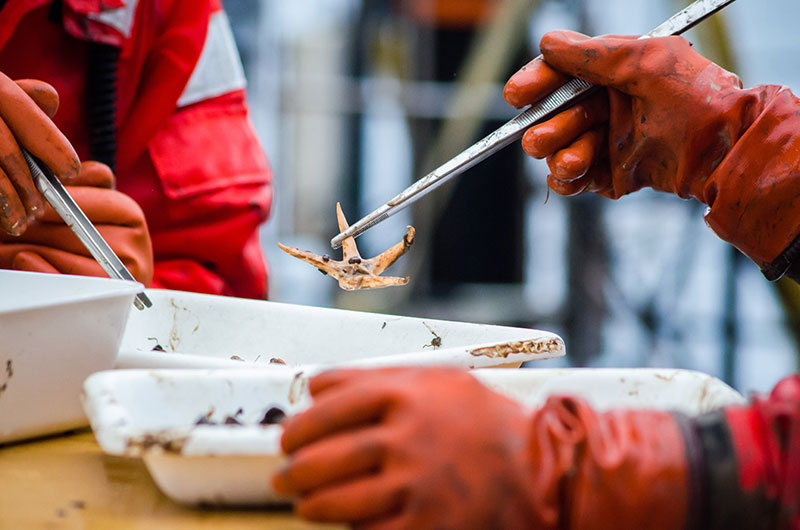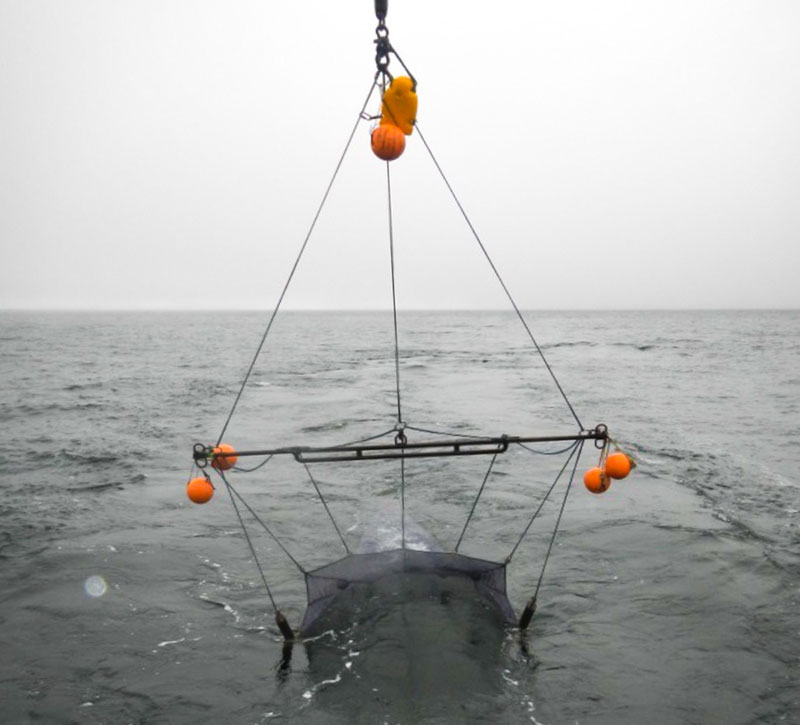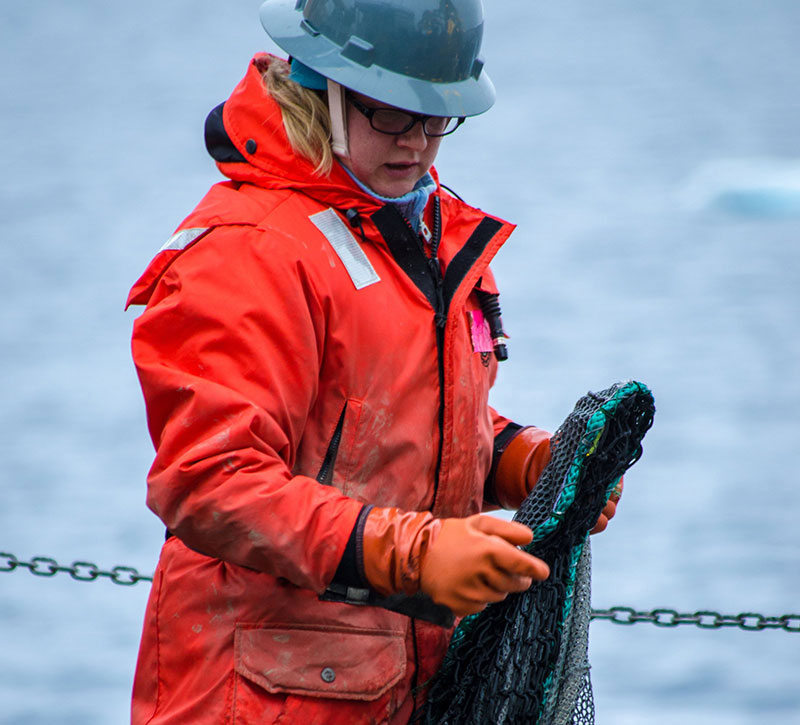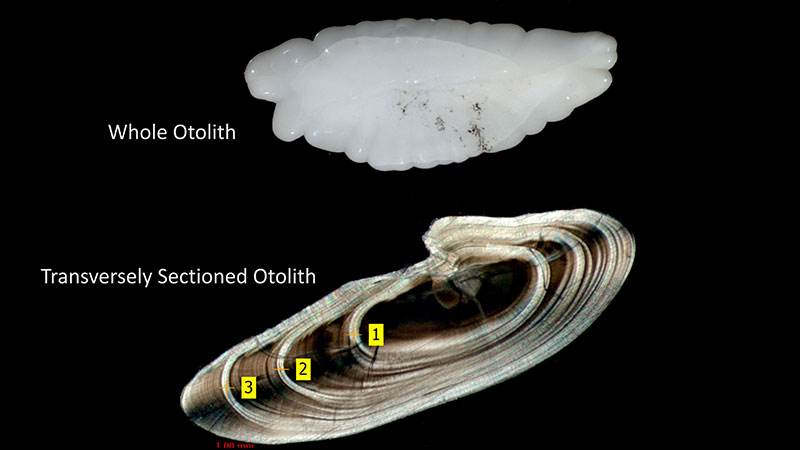
By Kelly Walker, Graduate Student, University of Alaska Fairbanks
July 26, 2016

The trawl is important to determine what species of benthic invertebrates and fishes are in an area. The science team sorts through the organisms, mud, and rocks brought up by the trawl, finding different animals, like this sea star. Image courtesy of Caitlin Bailey, GFOE, The Hidden Ocean 2016: Chukchi Borderlands. Download larger version (3.3 MB).
As the sole member of the fish team aboard the Healy, my responsibility is to run the bottom trawl for sampling fishes, as well as benthic invertebrates.
The plumb staff beam trawl (PSBT-A) is a small bottom trawl that uses a three-meter beam to keep the mouth of the net open. Along the bottom of the net mouth, there is a long chain of rubber “rollers” that act as small wheels to keep the net from dredging into the seafloor and obtain only a sample of what is directly on the surface of the seafloor. Additional weights are used on both sides of the beam to ensure the net reaches the bottom at different depths. Floats are also added or taken off when changing the target fishing depth.

The trawl spreads out behind the ship, complete with orange floats that help to target a certain depth. Image courtesy of Kelly Walker, UAF, The Hidden Ocean 2016: Chukchi Borderlands. Download larger version (184 KB).

Kelly Walker prepares the trawl for deployment from the Healy’s aft deck. Image courtesy of Caitlin Bailey, GFOE, The Hidden Ocean 2016: Chukchi Borderlands. Download larger version (3.4 MB).
Small fixes are always required while using this net. Sometimes holes need to be sewed shut, d-rings need to be reattached, or new floats need to be put on. I can’t tell you how many shackles I’ve wired shut or how many rings and other hardware I’ve had to attach to this net.
Scientific bottom trawls leave a very small footprint on the sea floor compared to large commercial trawls. Where commercial trawls are towed for hours at a time, my net is only towed from three to 45 minutes.
Trawling in the Arctic is definitely a different ballgame than trawling elsewhere in the world. You need to have a pretty wide open area to put the net down, otherwise ice can get caught on the winch wire and cause all sorts of problems. Or, a piece of ice could get lodged in the mouth of the net, ripping it open or completely destroying it. Ice has been the main issue on this expedition in terms of trawling for me. Early on in the cruise, we were unable to trawl due to too much ice. We’ve had some great trawls the last few days and hopefully they keep coming until the end of the cruise!
We use the PSBT-A to determine what species of benthic invertebrates and fishes are living in the area. The samples we collect are also used to estimate abundance and biomass of these species, as well as for food web studies.
We take several different samples from the fish specimens that we collect. Stomachs are dissected for diet analysis, muscle tissue samples are taken to determine trophic level, and otoliths (ear bones) are taken to estimate age.

Kelly Walker is able to estimate the length of a fish by measuring the total length of a whole otolith. She can also estimate the age of a fish by transversely sectioning a whole otolith and counting the growth rings. Image courtesy of Kelly Walker, UAF, The Hidden Ocean 2016: Chukchi Borderlands. Download larger version (921 KB).
My research uses the otoliths collected from these fish. From these otoliths, I’ve developed linear equations for each fish species, relating otolith length to fish length. This enables me to determine the size of the fish when I only have the otolith the measure.
The second part of my thesis project is applying these equations to otoliths that are found in ice seal stomachs collected during the subsistence harvest in Alaska. Being able to estimate the size of a fish at the time of consumption enables scientists to determine the energetic value of the fish and to understand how important certain fish species are to ice seal diets.